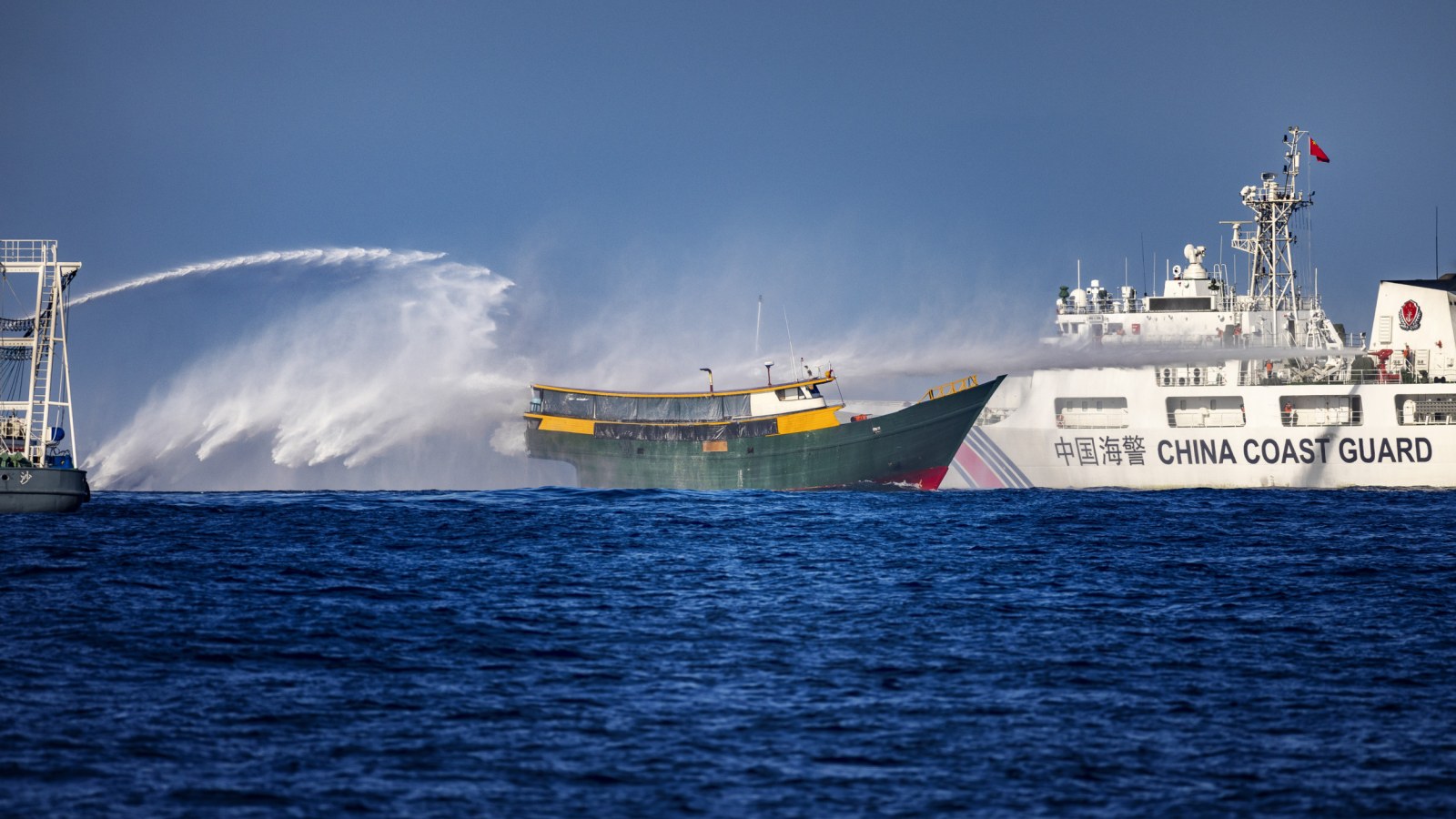The rising confrontations between the Chinese Coast Guard and their Philippine counterparts have been making headlines, but another country in the South China Sea is the target of Beijing’s aggressive maneuvering. Vietnam has expressed concerns at Chinese research vessels’ increased activity in its waters and has asked Beijing to cease its “illegal activities.”
Indian Navy’s Project-75I: German Shipbuilder Says Stealthy AIP Submarines With Lithium-Ion Battery To Be ‘Game Changer’
In line with China’s maritime Gray zone tactics, there has been an increase in the frequency and duration of Chinese ships in Vietnam’s Exclusive Economic Zone (EEZ) upping the ante against Vietnam. In 2023, as well, a Chinese survey vessel conducted a month-long incursion in Vietnam’s EEZ, which extends out 200 nautical miles from the country’s coast.
The tension between the two countries can be another potential flashpoint in the South China Sea.
Chinese research, coast guard, and civilian ships have maintained a continued presence in these waters while harassing Vietnamese oil and gas operations. On June 6, Vietnam expressed concern at the survey activities of the Hai Yang 26 vessel in its EEZ and continental shelf. Hanoi has registered its disapproval of the Chinese aggression through diplomatic channels.
A spokesperson for the foreign ministry, Phạm Thu Hằng said on June 6: “Vietnam is extremely concerned and resolutely opposes and demands that China end the illegal survey activities of the Hai Yang 26 vessel within Vietnam’s exclusive economic zone and continental shelf, as defined by the United Nations Convention on the Law of the Sea (UNCLOS 1982).”
The extended presence of Chinese survey vessels in the region is part of Beijing’s assertive moves in its neighbor’s EEZ to assert claim over almost the entire South China Sea, which is rich in untapped oil reserves and natural gas. The sea is estimated to have 11 billion barrels of untapped oil and 190 trillion cubic feet of natural gas.
Hai Yang 26 is a multi-functional scientific research vessel operated by the China Geological Survey, a sub-agency under the Chinese Ministry of Natural Resources. It has an endurance of 35 days and is equipped with 32 geological survey equipment modules, including those for drilling, static cone penetration, geophysical surveys, and mineral studies.
Scientists on board can conduct comprehensive surveys of reefs and other investigations related to offshore engineering projects. Electronic equipment includes single-beam and multi-beam echosounders, an acoustic current Doppler profiler, and seismic data collection tools.
Survey vessels are designed to examine subsea structures by sending sound waves into the ocean and collecting samples underwater. According to the International Maritime Organization’s database, 64 registered Chinese survey vessels were built in or after 1990, surpassing 44 in the US and 23 in Japan.
The survey activities of ships flagged to other nations can usually be distinguished by the vessel’s operator. In the United States, for example, military surveys are done by the U.S. Navy, marine scientific research is conducted by universities or civilian organizations like the National Oceanic and Atmospheric Administration, and commercial surveys are conducted by private companies.
However, there are no such distinctions among China’s state-owned fleet, making it impossible to confidently identify the purpose of most surveys. China’s civil-military convergence makes it likely that data obtained by Chinese survey vessels is shared among scientific, military, and commercial entities.
China is aggressively pursuing the seabed mining doctrine. In the South China Sea, underwater profiling is very advantageous for China’s operations of subsurface vessels like Autonomous Underwater Vehicles (AUVs).
In 2019, Chinese and Vietnamese coast guard vessels were involved in a week-long confrontation over a reef in the South China Sea, risking the biggest clash between the two nations in five years. It was a major stand-off between the two countries since a Chinese oil rig arrived off the disputed Paracel Islands in 2014.
In 2023, the two countries had another standoff as Vietnam decided to expand its oil drilling operations in Vanguard Bank, an area both sides claim. Both countries have been sending ships into the area to expel the other side’s vessels.

China Builds Military Fortresses On Disputed Islands
In recent years, satellite imagery has confirmed that China is reclaiming land in the South China Sea by reclaiming more land around the islands or by creating new islands.
This has been done by piling sand onto existing reefs, and China has constructed ports, military installations, and airstrips—particularly in the Paracel and Spratly Islands. China has militarized Woody Island by deploying fighter jets, cruise missiles, and a radar system.
Besides the ostensible scientific goals, these surveys produce data on seabed conditions that serve both civilian and military purposes. While seismic data is critical in assessing geological conditions, the presence of hydrocarbons, water, and seabed conditions also affect the ability to detect submarines.
Research vessels involved in scientific research can also use their instruments for naval reconnaissance, gathering intelligence on foreign military facilities and vessels operating in the vicinity.
By studying seasonal deployment patterns in the region, China can optimize its submarine operations. Understanding maximum depths aids in visualizing mine warfare scenarios. Continual wind data collection informs take-off and landing requirements for both enemy jets and China’s airpower in the region.
This is a critical capability as the US naval force, along with its ally, has been traversing the South China Sea to maintain freedom of navigation in international waters.
- Ritu Sharma has been a journalist for over a decade, writing on defense, foreign affairs, and nuclear technology.
- The author can be reached at ritu.sharma (at) mail.com
- Follow EurAsian Times on Google News